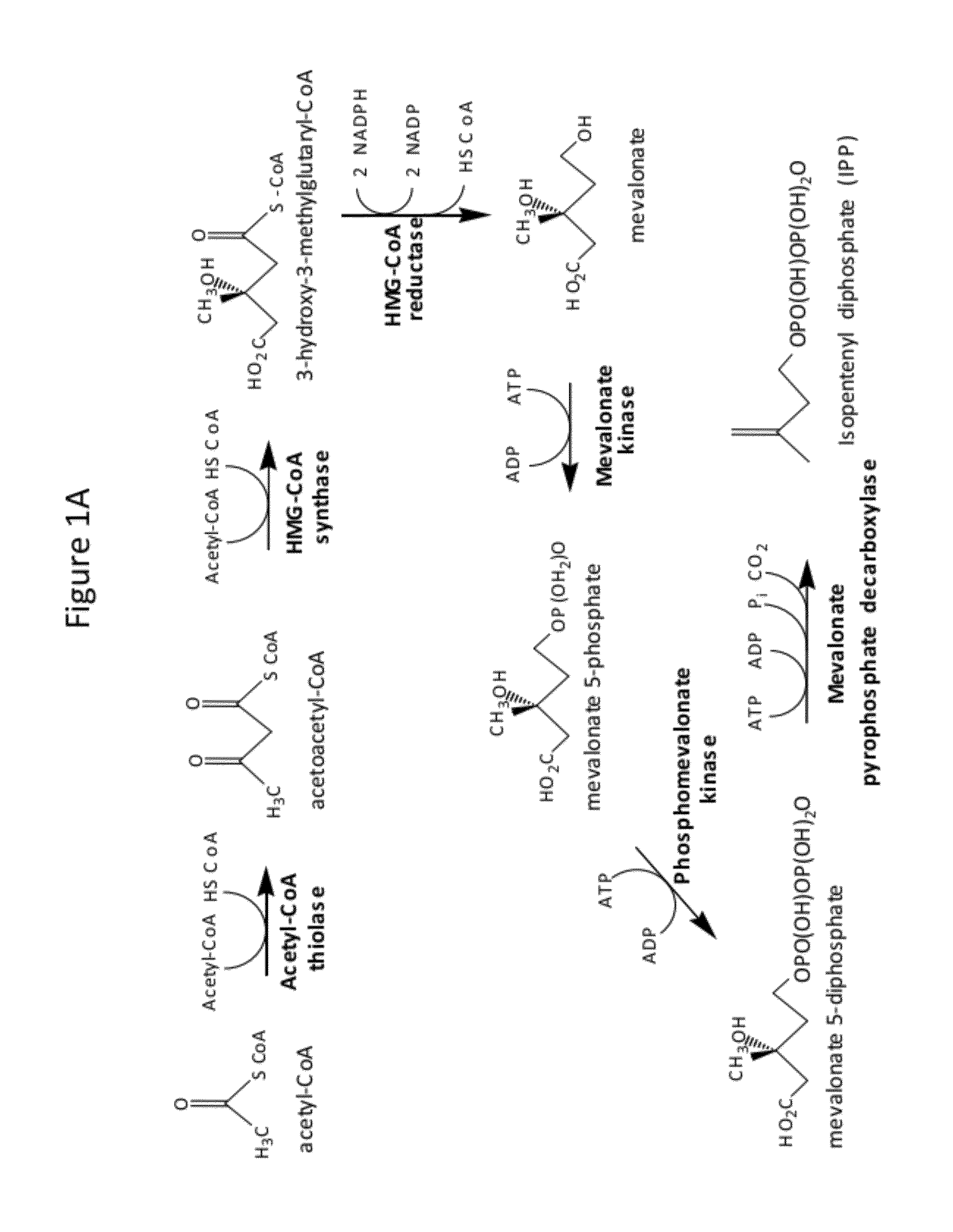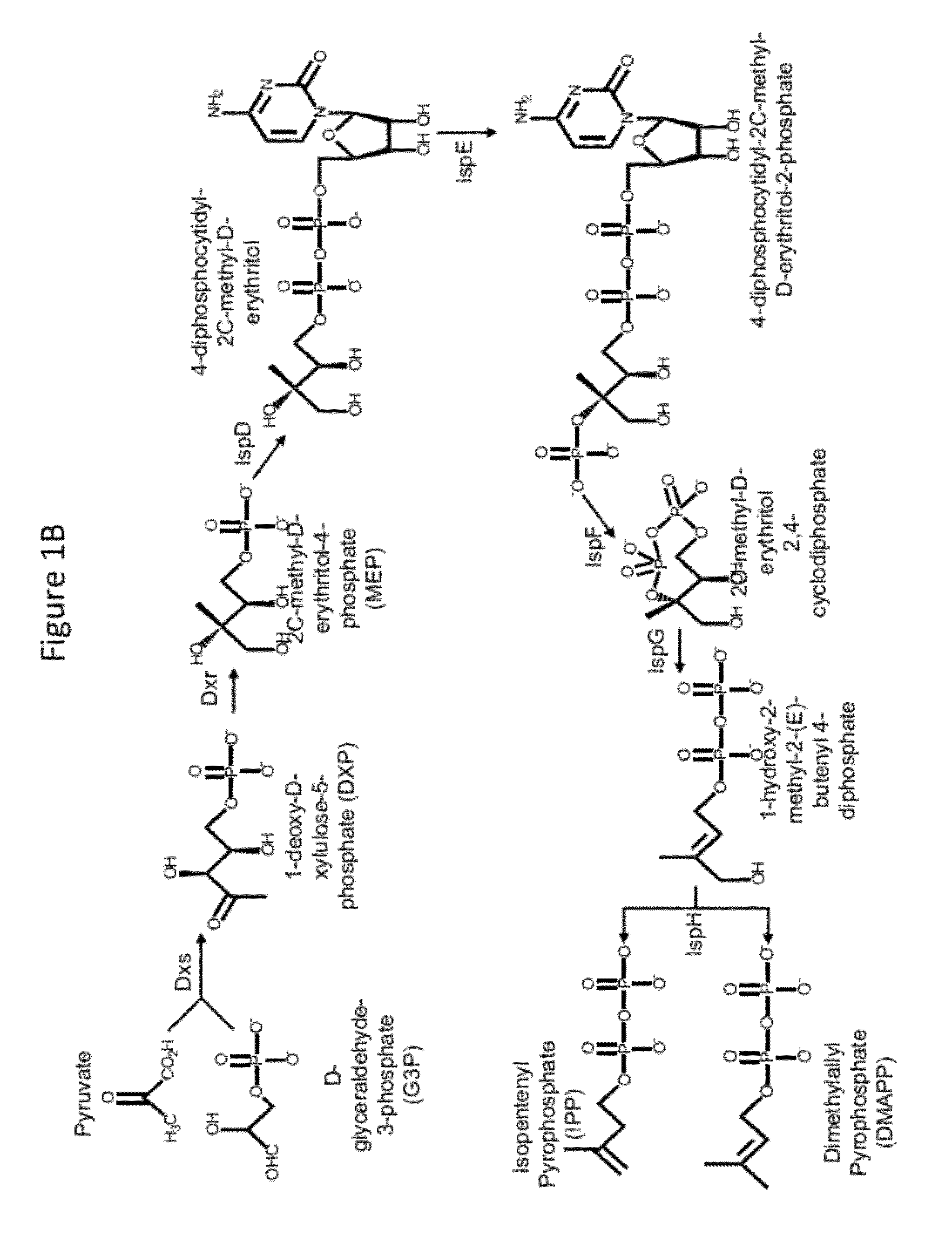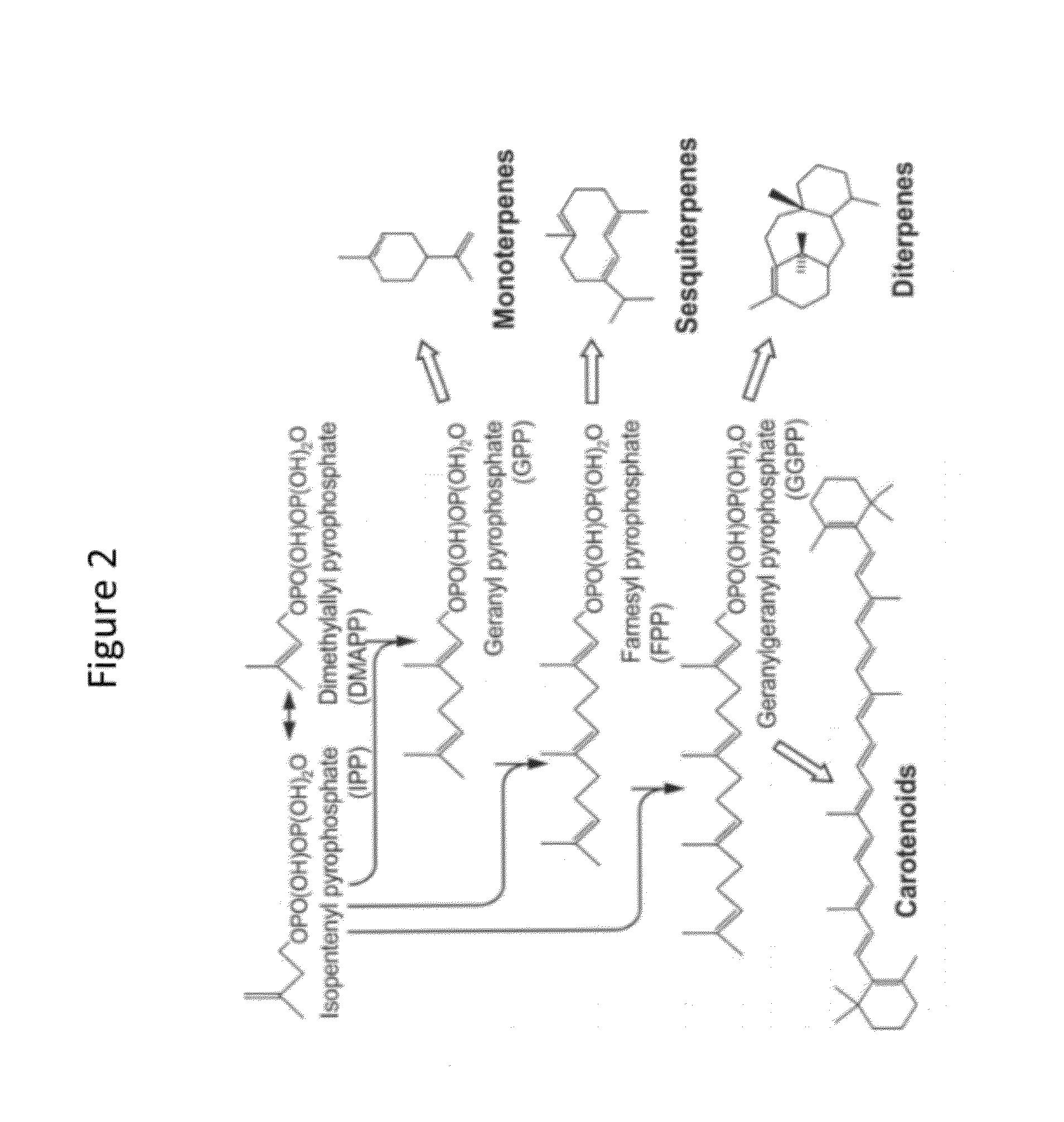Gel-encapsulated microcolony screening
- Summary
- Abstract
- Description
- Claims
- Application Information
AI Technical Summary
Benefits of technology
Problems solved by technology
Method used
Image
Examples
example 1
7.1 Example 1
Generation of Genetically Modified Cells Producing a Water-Immiscible Compound
[0248]This example describes an exemplary method for generating genetically modified haploid S. cerevisiae cells engineered to produce the isoprenoid farnesene.
[0249]The Phase I integration construct comprises as an integrating sequence nucleotide sequences that encode a selectable marker (hygA, which confers resistance to hygromycin B); two enzymes of the S. cerevisiae MEV pathway (the truncated HMG1 coding sequence, which encodes a truncated HMG-CoA reductase, and the ERG13 coding sequence, which encodes HMG-CoA synthase), and another enzyme of S. cerevisiae (the ERG10 coding sequence, which encodes acetoacetyl-CoA thiolase), under control of galactose-inducible promoters (promoters of the S. cerevisiae genes GAL1 and GAL10); flanked by homologous sequences consisting of upstream and downstream nucleotide sequences of the S. cerevisiae GAL80 locus. Upon introduction into a S. cerevisiae host...
example 2
7.2 Example 2
Encapsulation of Cells
[0266]This example describes an exemplary method for encapsulating a cell in a hydrogel and screening the encapsulated cell for the recombinant production of one or more water-immiscible compounds.
[0267]7.2.1 Preparation of a Microfluidic System
[0268]A microfluidic device, composed of the elastomeric polymer poly(dimethysiloxane) (PDMS), and comprising at least two channels interconnected at a T-junction, is fabricated using an etched wafer substrate, e.g., prepared by photolithography, as a mould.
[0269]In brief, the wafer substrate is prepared by rinsing the wafer with acetone and isopropyl alcohol. A photoresist, for example, SU8-3000 photresist (Microchem, Newton, Mass.) is applied to the wafer by spin-coating. The photoresist coating is then selectively irradiated with UV light through a mask designed to allow for exposure to the photoresist in a selected pattern, e.g., a pattern comprising two channels interconnected at a T-junction. Following...
example 3
7.3 Example 3
Particle Analysis and Sorting
[0281]This example describes an exemplary method for analyzing and sorting hydrogel particles comprising cells producing water-immiscible compound.
[0282]A 70 μm BD cellstrainer is placed on a 50 ml conical tube. Culture comprising the encapsulated cells is applied to the center of the filter membrane with a 5 ml pipette. The particles are washed off the membrane with two 1 ml aliquots of PBS, centrifuged for 30 sec. at 100 g, resuspended in 1 ml PBS and centrifuged again for 30 sec. at 100 g. The filtered culture is then added in aliquots to a 10 μm Partec filter and centrifuged for 90 sec. at 100 g. 1 ml of PBS is added to the filter cake of each filter and the cake is resuspended by pipetting up and down. Another 1 ml of PBS is added to the suspension and centrifuged for 90 sec. at 100 g.
[0283]Nile Red staining solution (2 ml / sample) is prepared by adding 200 μl Nile Red stock (100 μg / ml in EtOH) to every 10 ml of PBS (2 μg / ml final), as n...
PUM
 Login to View More
Login to View More Abstract
Description
Claims
Application Information
 Login to View More
Login to View More - R&D
- Intellectual Property
- Life Sciences
- Materials
- Tech Scout
- Unparalleled Data Quality
- Higher Quality Content
- 60% Fewer Hallucinations
Browse by: Latest US Patents, China's latest patents, Technical Efficacy Thesaurus, Application Domain, Technology Topic, Popular Technical Reports.
© 2025 PatSnap. All rights reserved.Legal|Privacy policy|Modern Slavery Act Transparency Statement|Sitemap|About US| Contact US: help@patsnap.com



